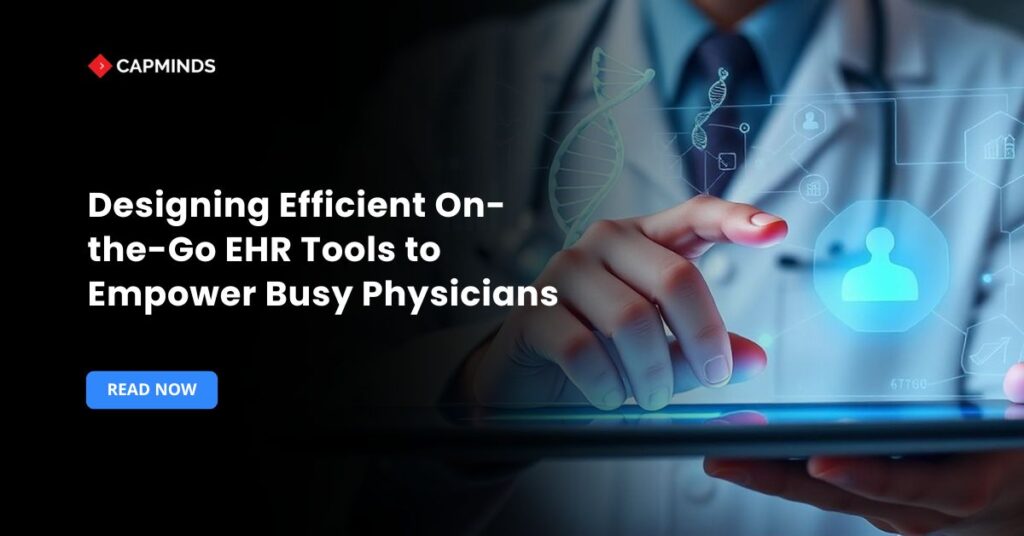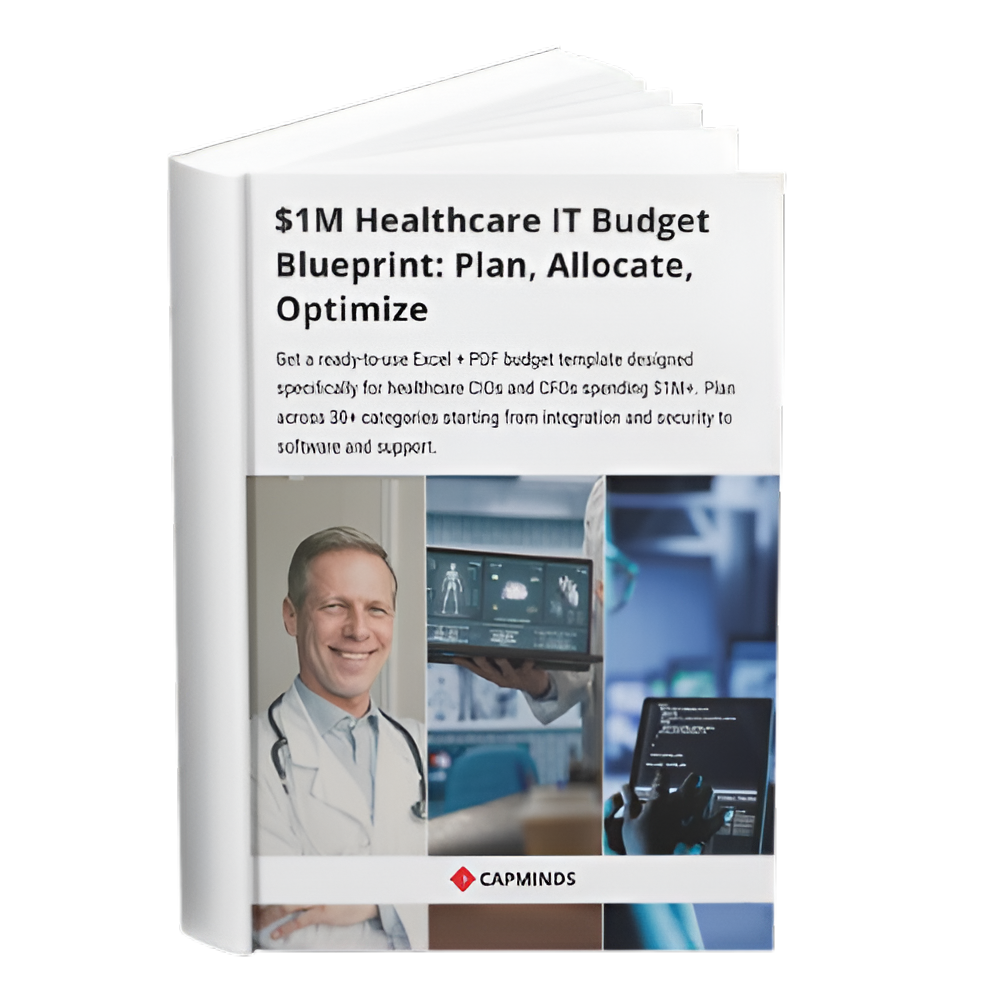Designing On-the-Go EHR Tools for Busy Physicians
Physicians in the United States are under constant pressure. They deal with complex EHR systems, long hours, and huge volumes of documentation. Documentation consumes their own time, according to several studies. This directly increases burnout.
The bulk of current EHR systems are not designed to be flexible. They usually use bulky desktop arrangements. They hamper doctors’ development rather than assisting them. This is a problem in high-volume care settings.
Mobile-friendly EHR systems are becoming increasingly required. These technologies should function like those of doctors: in various settings, on the go, and with limited time constraints. Clinicians may manage care from any location with mobile EHR solutions, without losing data security or time.
The Burden of EHRs on Busy Physicians
Before diving into design features, it’s crucial to understand physicians’ daily challenges. American doctors often work long hours and juggle patient care with heavy documentation requirements.
- An AMA survey found 20.9% of physicians spend over 8 hours per week doing EHR tasks outside clinic hours.
- This after-hours charting steals time from family or rest, leading to frustration and burnout.
- Usability issues exacerbate the problem.
- Many EHR interfaces are clunky and not designed with clinical workflow in mind.
- One study rated average EHR usability at only 45 out of 100 on a standard scale, worse than 91% of common consumer tech products.
These limitations drive doctors to click more, waste more time, and become increasingly annoyed. Each additional step adds stress to an already demanding day.
Clinicians with tight schedules require technology that makes their tasks simpler, not more difficult.
This is why mobile EHR technologies are so vital. When properly designed, they enable physicians to view and update information while on the road. After-hours documentation is reduced through quick and simple interactions. It is a more sophisticated way of giving care without consuming personal time.
Related: EHR in 90 Days: Accelerating Digital Transformation in Healthcare
Add-on Features of EHR for the U.S. Physicians
1. Offline Access
Imagine updating a patient’s chart during hospital rounds in a basement or consulting in a rural clinic, and the Wi-Fi drops. Doctors who work under unpredictable conditions require offline access. It allows for continuous use of the EHR even in the absence of internet connectivity.
Important patient information should be saved immediately to mobile EHR devices. When the connection is restored, the system may automatically sync everything. The offline-first technique has already been applied. For example, Oracle just introduced a mobile EHR add-on. Without internet connectivity, care teams can read and update patient records. The system automatically syncs once they are back online.
Physicians can work from home by keeping recent notes, prescriptions, and charts. They may add changes or verify data immediately, whether they are in a patient’s home or a faraway clinic. Dead zones and slow uploads are not an issue for them. Workflows stay fluid under this structure. It saves time and reduces stress by avoiding documentation backlogs.
2. Data Privacy & Security
Mobile EHR apps manage sensitive patient information. That is why strict privacy and security precautions are essential. Any mobile solution must fulfill HIPAA regulations. Data should be protected with various layers of protection. The key features include:
Encryption At Rest and In Transit
All data must be encrypted, whether stored on the device or transferred. This protects patient information even if the device is lost or stolen.
Strong user authentication
The software should require a secure login. Multi-factor authentication (MFA) and biometric unlocks, such as fingerprints or facial recognition, provide an additional degree of security.
Biometrics enable physicians to access records rapidly during rounds. MFA protects the data in case someone else gains access to the device. During rounds, biometrics enable doctors to swiftly access records. If someone else manages to access the device, MFA protects the data.
Device Control and Role-Based Access
Only the information that users need should be displayed. Role-based access helps to maintain control over this. Personal devices should have security features such as remote wiping and containerization. Administrators can remotely remove patient data if a device is lost.
Audit trails and compliance logs
Every change and access should be monitored by mobile EHR applications. These logs enable security monitoring and regulatory compliance. Furthermore, they show who has viewed or edited patient records.
Mobile EHRs safeguard patients and providers by incorporating these features. Physicians benefit from the ease of mobility. Administrators may rest easy knowing that the data is safe.
These safeguards are essential given the increase in data breaches, which are frequently brought on by misplaced or stolen devices. They are necessary.
3. Intuitive UI/UX
Doctors who are always on the road do not have time to cope with sophisticated software. They require EHR software that is fast, simple to use, and designed for small screens. A well-designed interface is both advantageous and required.
Effective UI/UX enables clinicians to chart faster and spend less time exploring menus. The most significant core design principles are as follows:
Design Using Mobile First
Design for tablets and smartphones first. The layout ought to fluidly adapt to various screen sizes. Make use of big, tactile buttons.
On the home screen or summary view, important patient data, such as vital signs, medical history, and current lab results, should be easily accessible. This minimizes menu digging and saves time.
Faster Workflows with Fewer Clicks
Time is of the essence. During a busy clinic schedule, every additional tap is a waste of energy.
Make it possible to complete daily tasks with a few clicks, such as taking notes, ordering test work, and replenishing medications.
Add shortcuts for frequently used phrases, such as templates, auto-complete, and prebuilt order sets. To cut down on typing, contemporary mobile EHRs also allow voice input or barcode scanning.
Smart Alerts and Easy Visuals
Make sure the screens are easy to read. Clear typefaces and high contrast are essential for making text readable in bright or dark environments.
Important values, such as aberrant vitals or test results, should be marked using icons or colors so that they stand out immediately. Doctors can obtain critical updates via push alerts without being distracted.
Customization and Usability
Allow users to personalize their workspaces. Pediatricians would want to have growth charts on the main screen. A surgeon may prefer recent imaging from the top. The app should be easy to use. A novice user should find it easy to browse. This reduces frustration and the need for training.
An EHR interface intended for speed and clarity allows physicians to execute activities in seconds rather than minutes.
The key benefits are less screen time, less stress, and more time for clinicians to focus on patient care.
These tiny enhancements accumulate over time. Improved processes. Charting after hours is reduced. Reduced burnout. Providing an improved experience for both patients and physicians.
4. Voice Notes and Hands-Free Documentation
For physicians perpetually short on time, voice-enabled documentation is a game changer. Speaking a note or command is often faster and more natural than typing on a small touchscreen.
Modern speech recognition has become highly accurate, and many EHR vendors have integrated medical dictation into their mobile apps. In practice, a doctor can simply tap a microphone icon and start talking. The software transcribes the dictation directly into the patient’s record.
- The efficiency benefits are significant: Speech-to-text can transcribe at 150+ words per minute, whereas the average doctor types about 30 WPM.
- In one analysis, switching from typing to dictation was estimated to save the average physician 7 hours per week on documentation.
- That’s nearly an hour a day reclaimed, which could mean seeing an extra patient, finishing work earlier, or simply reducing mental strain.
- Moreover, voice notes allow a form of hands-free multitasking.
- A clinician can dictate findings while walking to the next exam room or during a short elevator ride.
Besides speed, voice technology has evolved to fit clinical needs. Many systems support medical vocabulary out of the box, reducing errors in transcribing drug names or complex terms. Providers can also leverage voice commands.
Some advanced platforms are exploring ambient voice technology, securely capturing the conversation during a patient visit and automatically generating a draft note. While still emerging, these AI-driven solutions are already being piloted in practices, showing real-world potential.
Related: Custom EHR Modules for Behavioral Health, SDOH, and Pediatrics
Additional Features for On-the-Go EHR Success
Beyond the core capabilities above, several other features can greatly enhance a mobile EHR tool’s usefulness for physicians and care teams. When designing an on-the-go solution, consider including:
- Real-Time Notifications & Alerts: Keep doctors updated with push notifications for critical events, for example, an alert when a new lab result comes in or when a patient’s vital signs flagged by remote monitoring go out of range.
- Secure Messaging and Collaboration: Busy providers often need to coordinate with colleagues on the fly. A mobile EHR app can include secure chat or messaging features that let clinicians discuss cases or hand off tasks with full HIPAA compliance.
- Integrated Task Management & Scheduling: On-the-go tools can help physicians manage their to-do list and schedule in real time. Doctors should be able to review their clinic or rounding schedule, get reminders for upcoming appointments, and even adjust scheduling on their mobile.
- Point-of-Care Data Capture: Mobile devices come with cameras and scanners – leverage them. For instance, the app could allow scanning a patient’s barcode wristband to pull up the right chart instantly.
- Decision Support and Information Access: To truly empower doctors on the go, mobile EHRs can integrate quick links to clinical decision support or references. This might mean having embedded guidelines, drug interaction checkers, or even an AI-driven symptom checker accessible within a few taps.
Each of these features is already implemented in various healthcare technologies today, underlining that designing for mobility doesn’t mean compromising functionality.
It extends the reach of the EHR to wherever the physician needs it, creating a continuous care environment. Hospital administrators evaluating digital health projects should look for these kinds of capabilities to ensure the tool will truly meet providers’ day-to-day needs.
Empower Your Care Teams with Smart, Mobile-First EHR Solutions
At CapMinds, we specialize in building EHR tools that work the way busy physicians do: fast, mobile, and flexible. From custom EHR development to smart EHR module integration, we help you design on-the-go solutions that reduce burnout, streamline documentation, and improve care delivery.
Whether you’re looking to add offline access, enhance security, or integrate voice documentation, we’ve done it, and we can do it for you. Our services include:
- Custom EHR Development (iOS, Android, Web)
- EHR Module Development (Voice Notes, Secure Chat, Alerts)
- Mobile-First UI/UX Design
- HIPAA-Compliant Security Architecture
- Offline-First Capabilities with Auto-Sync
- Integration with Labs, Billing & Remote Monitoring
Let us help you design mobile EHR systems that truly serve your physicians, anytime, anywhere. Partner with CapMinds to modernize how care is delivered on the move.




